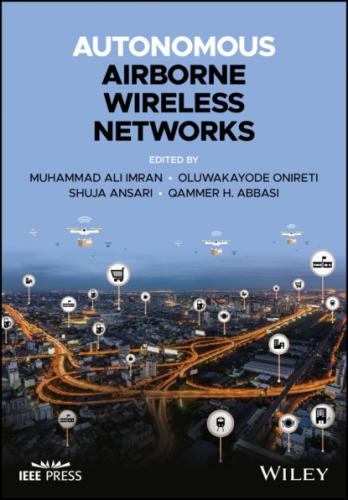(2.5)
where
Table 2.2 Measurement campaigns to characterize the path loss and large‐scale AG propagation fading.
| References | Scenario |
|
|
|
|---|---|---|---|---|
| Yanmaz et al. [8] | Urban/Open field | 2.2–2.6 | — | — |
| Yanmaz et al. [9] | Open field | 2.01 | — | — |
| Ahmed et al. [10] | — | 2.32 | — | — |
| Khawaja et al. [11] | Suburban/Open field | 2.54–3.037 | 21.9–34.9 | 2.79–5.3 |
| Newhall et al. [12] | Urban/Rural | 4.1 | — | 5.24 |
| Tu and Shimamoto [13] | Near airports | 2–2.25 | — | — |
| Matolak and Sun [14] | Suburban | 1.7 (L‐band) | 98.2–99.4 (L‐band) | 2.6–3.1 (L‐band) |
| 1.5–2 (C‐band) | 110.4–116.7 (C‐band) | 2.9–3.2 (C‐band) | ||
| Sun and Matolak [15] | Mountains | 1–1.8 | 96.1–123.9 | 2.2–3.9 |
| Meng and Lee [16] | Over sea | 1.4–2.46 | 19–129 | — |
where
Conventional well‐known channel models for cellular communications can be used for UAV communications for UAV altitude between 1.5 and 10 m. One such model for the macro‐cell network was designed for the rural environment by the 3rd Generation Partnership Project (3GPP) in [7,37].
Since LoS and NLoS links are treated separately, the probability of LoS propagation is expressed as
Path loss and large‐scale fading can be calculated once the LoS probability is known from Eq. (2.7). As the communication nodes change their position, path loss also changes and can be found as
(2.8)
(2.9)
